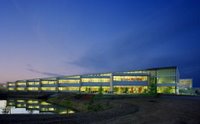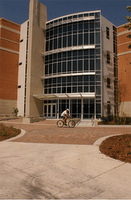Energy conservation around the home
Simply put, in these terms, sustainability is making sure your inflow - what you use up, consume, take away - doesn't exceed your outgo - what you give back, replenish, reuse, produce. The idea is that if you're living sustainably, what you give back or reuse will be greater than what you use up, thus a pleasantly repetitive cycle of conservation and sustainability occurs.
While of course there are many ways to conserve, perhaps energy conservation is one of the most important, or most highly publicized these days. While there are some sources of energy that are harder to conserve one, electricity is one we often overlook because it seems unlimited (except for when a power outage hits!), easy to come by, and relatively effortless to produce as a commodity. However, taking some simple precautions to cut back on our electricity usage can save us money and energy over the long run.
Accordingly, here's a few straightforward tips on conserving electricity around the house:
- While they are a bit spendier, if you can afford to replace standard, older CRT monitors with newer flat-panel ones, you'll not only have more space on your desk but less strain on your pocketbook, as they take up 1/3 the electricity of conventional monitors.
- Another simple way to cut back on electricity is to examine the wattage/output of the lightbulbs you're using, and their placement around your home. Do you really need that 100 watt bulb? Or could you do with a 75 watt one? What about the lamps in your house - are they placed to give warmth and light in an efficient manner, or do you have "overlighting", and could actually do with getting rid of one or more lights in a certain room?
- Think conservation when it comes to the stove. Use an appropriate sized pan for what you're cooking (the smaller, the better), cover your pot when you need to boil water, and match the size of the pan you're using to an appropriate burner. You'll use less electricity and cook food faster and more completely.
- Think conservation again when it comes to heating and cooling your house. For this, think about the time you need it to be hot or cool. For instance, in the winter, try programming your thermostat to be cooler during the night, and then come on again a half hour before you get up. You'll save energy and still keep warm inside your bed.
In the summer, cool off your house at night by opening windows and letting fans circulate air once things begin to cool off, and then close windows and lower shades in the morning before the day starts warming up. You'll notice a significantly improved temperature inside your house by using both of these methods, and in turn, you'll pay less to heat or cool your place.
These are just a very few of all the possible ways to conserve energy around the home. If you set your mind to it, there's really very few things you cannot conserve on, with a little work or planning. So go ahead, find something that's being wasteful, and find a smarter way to do it. You'll thank yourself later on when you reap the financial rewards.
Categories: Conservation, Energy





